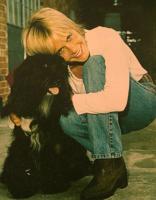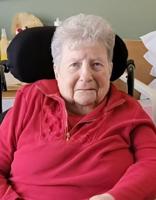Hank Stelter had been selling and servicing Singer sewing machines for 13 years when he decided to go into business for himself. He could sense the business was changing and that consumers wanted more options.
So in August 1964, with the help of his wife, Helen, and their four young children, he opened Stelter Sewing Machines on South Front Street in downtown Mankato, where he sold Bernina machines as well as several other brands.
The store, which is now on the east end of the Madison East Center, has moved seven times in the ensuing 46 years. The industry has changed almost as much as Stelter’s address. In the early days, customers were sewing clothes for their families; today, it’s quilting and home decorating projects that drive most of the business.
But in the midst of all the changes, some things never change. The Stelter family is still running the business — today Helen runs the store with her daughter Karen, who teaches most of the advanced classes, offers quilting services and helps with the repairs, and her son David, who comes in every weekend to work on repairs. And sewing machines are still the store’s bread and butter.
MN Valley Business Magazine: When the business started in 1964, was the whole family involved?
Helen Stelter: When we first started, they were children. But they helped to distribute fliers, to get our name out. Their father would drop them off at one end of the block, then they would take fliers to every house and their father would pick them up at the other end of the block. Hank was still going to people’s homes to do demonstrations and repairs, so I was at the store when he was gone.
Karen Stelter: She was a nervous wreck about that, too! I remember that she was so afraid someone would come in.
HS: I didn’t feel like I knew what to do, but Hank reminded me that I knew more about the machines than any of them did. So I just did it, because there really wasn’t any other choice.
MVB: How has the business changed since those early days?
HS: People aren’t sewing clothes anymore. They aren’t patching things up anymore. One thing that really helped us when we were downtown was people sewing their own lingerie; they took our classes and bought the right machines to use with those fabrics. But no one does that anymore.
KS: There are still people out there who sew clothes, but mostly the simple stuff — definitely not three-piece suits.
MVB: So what’s driving the business now?
KS: Quilts. Quilting is a great way to open the door to sewing for more people. If you’re going to learn to sew clothing, you have to learn how to take a pattern and make it fit the human body. But if you’re going to learn to quilt, you just have to learn how to do a straight stitch, how to cut your pieces. It’s a lot easier; it can be as involved or as simple as you want it to be.
MVB: How has you’re the business been affected by the economy?
HS: People aren’t buying the larger, higher-quality machines anymore. But we’re doing a lot more repairs.
KS: People pick up machines cheaply and it isn’t long before they need a repair. And unless you buy your machine from an independent dealer like us, then there’s no one to answer your questions or do the repairs. That’s why they come to us.
MVB: How have you survived all these years as an independent dealer?
HS: It’s been a struggle, especially since the economy turned down. But we’re thankful for the repairs.
KS: We also do a lot more quilting now on our long-arm machine. People bring in a finished top and the backing, and we can do the quilting for them. It seems like quilting will have to be a bigger part of the business now.
MVB: Are there very many independent sewing machine dealers left now?
HS: Very few. St. Peter has one. The store I knew about in Rochester closed. But Owatonna still has one, and Chaska has one. There are a few in the Cities, too. But as for options around here, it’s pretty much us.
KS: We’ve got people coming in from much further out now. They come from Iowa, New Prague, New Ulm and the Cities.
HS: We still have some people who come in with the same machines they bought from us in 1965 or 1966. They’ll last for 30 or 40 years if you take care of them.
MVB: How do you see the business changing in the future?
KS: It’s really hard to say. I don’t think it will ever go away.
HS: I think the quilting is here to stay.
KS: We’re starting to see some young people playing with it. It’s not the same kind of sewing we did, but they’re playing around with it now.
MVB: So who’s buying new machines now?
KS: Mostly quilters, but a few beginners, too. If we can get them in to talk to them, then they understand why it’s worth it to spend a little bit more. They get a class to help them get started and they can come back anytime to ask a question or to talk to someone about a problem they’re having. You wouldn’t get that at any of the big discount stores.























Commented
Sorry, there are no recent results for popular commented articles.